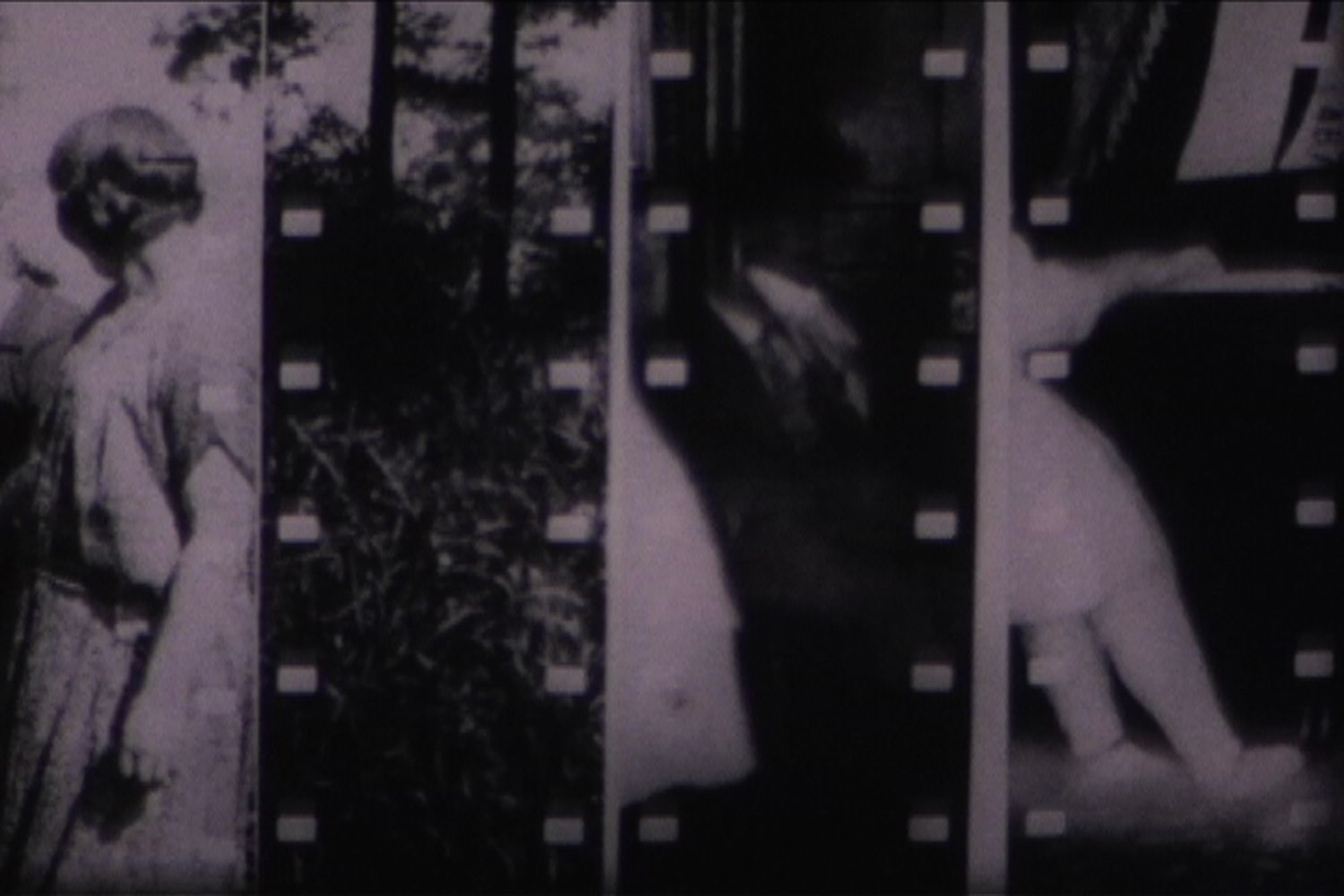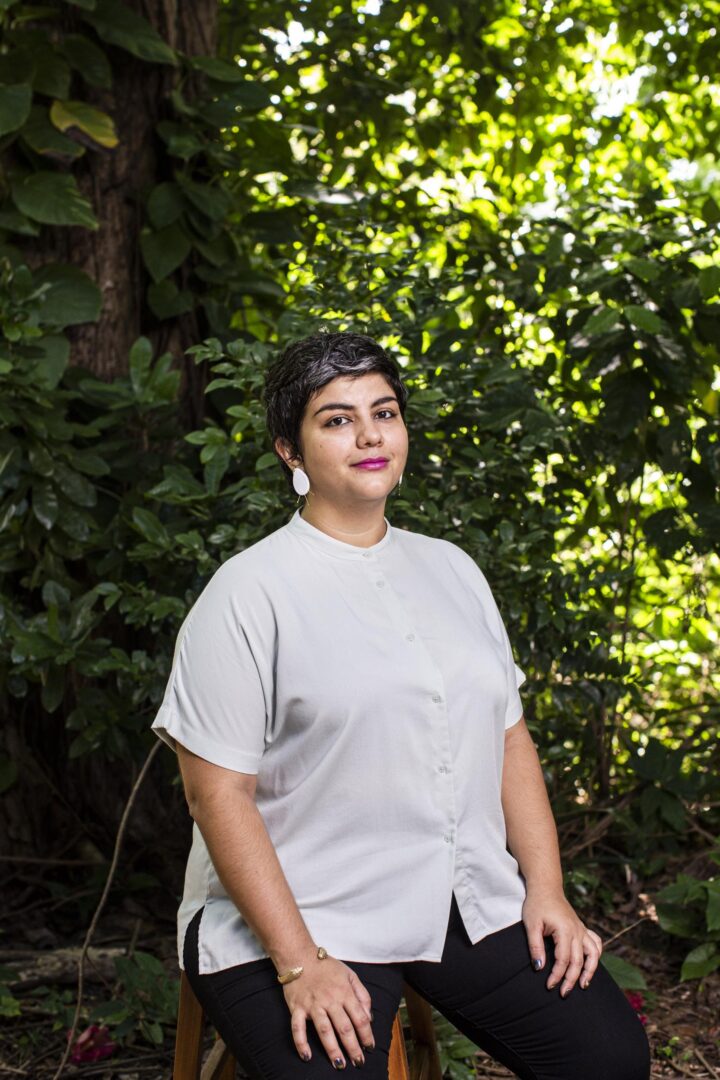
- This event has passed.
Punctures | Threading Histories

Wednesday, January 29, 7pm
$7 General / $5 Members / Free for Arts Access Pass Holders
How do textiles and media speak to individual, collective, and social histories? Featuring films by Alta Kahn, Cydnii Wilde Harris, Eytan İpeker, Laura Kraning, Lesley Loksi Chan, the Manaki Brothers, Senga Nengudi, and Susie Bennally, the eight films in this group screening include a found-footage film that utilizes Gone with the Wind to explore the cotton industry and transatlantic slavery in the United States; two films made as part of the project Navajo Film Themselves (1966) by Alta Kahn and Susie Bennally; and one of the few films shot in the Ladino language by Eytan Ipeker. With filmmaker Laura Kraning in person who will be present for a conversation and Q&A for her film Language of Memory.
Program
Cydnii Wilde Harris, Cotton: Fabric of Genocide
4 min, digital, sound, 2018
“This is a video essay about slavery. Oops. I mean, cotton.” – Cydnii Wilde Harris
Lesley Loksi Chan, Curse Cures
11 min, digital, sound, 2009
“The arrival of a new worker to a jeans factory causes changes to the rhythms of the workplace. This mysterious narrative integrates personal and collective history with fiction. The visuals were created with both found images and original photography reproduced on acetate sheets which were subsequently sewn together and projected onto a wall and video-taped. This mixed-media work is a reflection on the repetitive labour and materiality of textile work and the im/possibilities for resistance to challenging working conditions.” – Lesley Loksi Chan. Courtesy of Vtape.
Laura Kraning, Language of Memory
3 min, 16mm on digital video, sound, 2009
“Language of Memory is a hand-processed, optically printed film composed of rayographs of my grandmother’s still negatives from the early 1900s, strips of her old lace casting abstract patterns on high contrast film, and the overlapping gestures of sewing and splicing film, related techniques historically attributed to women. It is both homage to my grandmother’s creative influence and a deconstruction of memory through fragmentation and the accretion of associations surfacing from the tactile processes of the film’s making.” – Laura Kraning
Susie Bennally, A Navajo Weaver
24 min, 16mm on digital, silent, 1966
Alta Kahn, Second Weaver
10 min, 16mm on digital, silent, 1966
A Navajo Weaver and Second Weaver are two films produced in a workshop in 1966 taught by Sol Worth, John Adair and Richard Chalfen. They traveled to Pine Springs, Arizona, where they taught a group of Navajo students to make documentary films, including Alta Kahn and her daughter Susie Bennally. In her life, Kahn was known as a renowned weaver, and Bennally was an accomplished weaver, having worked with her mother since the age of eight.
The series of films made through this workshop is known as Navajo Film Themselves. Emerging by a critique from the anthropologists that anthropological film had been “dictated by American (or Western) trained eyes and hands and guided by the emotions, attitudes, and values of that culture”, the project nonetheless evinces several colonial presumptions on the part of the instructors. The two films, which have been shown in venues such as the Flaherty Film Seminar and the Navajo National Museum, are both depictions of two experienced and skilled weavers (Kahn and Bennally), but also open important questions on the nature of ethics, aesthetics, and pedagogy. Courtesy of Visionmaker Media.
Senga Nengudi, The Threader
6 min, digital, sound, 2007
“…The Threader (2007), Nengudi shows the moving body actively engaged with sculptural material. Produced from a residency at The Fabric Mills Workshop and Museum in Philadelphia, this film follows the movements of a worker carefully striding across the factory floor with a collection of threaded spools. His gestures, practiced movements used in his daily work, are as seamless as a choreographed dance. She cuts to close ups of his fingers delicately tying thread to a hook and of the swaying metal machinery… the artistry of this work relies on the medium of the moving image to build narrative by cutting to discrete moments, or exploring the space of the factory itself.” – Simone Krug, Contemporary Art Review Los Angeles. Digital file courtesy Thomas Erben Gallery.
Yanaki and Milton Manaki, The Weavers (also known as Grandmother Despina)
1 min, 35mm on digital, silent, 1905
Widely considered to be the first film shot in the Ottoman Empire, this film shot in the city of Monastir (modern day Bitola, North Macedonia), which was a economic and cultural center of the empire. Originally titled “Our 114-year-old grandmother at work weaving”, the film and its filmmakers have come to symbolize an enigmatic moment at the turn of the 20th century, coinciding with the dissolution of the Ottoman Empire, and emergence of the many modern states throughout the region.
Eytan İpeker, Dantelacı (The Lace Peddler)
18 min, 16mm on digital video, Turkish and Ladino with English subtitles, 2005
“Adapted from the award-winning short story by Eli Aji, Dantelacı (The Lace Peddler) depicts traveling lace seller Yasef Efendi as he adjusts to societal changes in 1950s Istanbul.” – Eytan İpeker
This screening is part of Punctures: Textiles in Digital and Material Time. Consisting of three exhibitions and public programs that weave into each other, Punctures features artists who are invested in the intersections and history of textile practices, media art, and critical and liberatory politics, including trans fashion and domesticity; gendered and immigrant labor under global racial capitalism; Gelede women’s commemoration, protest and power as represented in textile work; speculative future-casting through Oglala Lakota knowledge systems, and more. The exhibition features installations by Betty Yu, Cecilia Vicuña, Charlie Best, Eniola Dawodu, Kite, and Sabrina Gschwandtner, performances by Charlie Best, Jodi Lynn Maracle, and Kite, and screenings of work by Jodie Mack, Pat Ferrero, Sabrina Gschwandtner, and Wang Bing. Punctures design by Kelly Walters.



